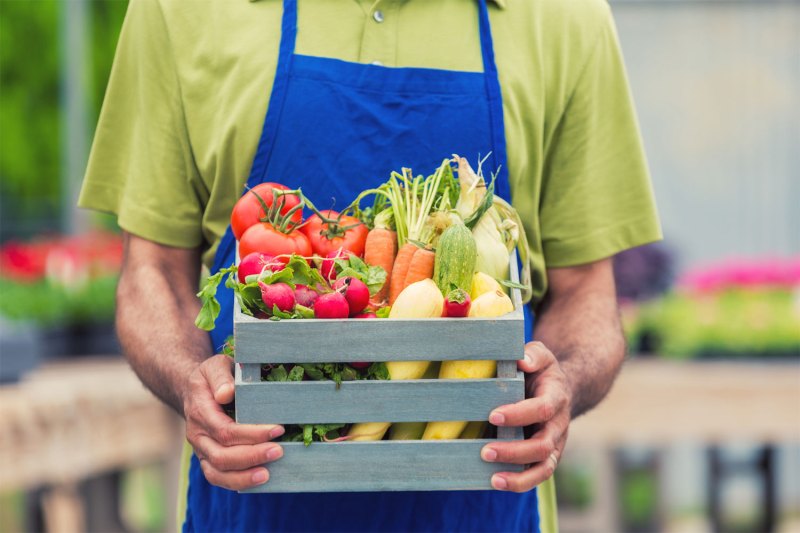The farm share has always been an attractive option for getting a variety of fresh produce at a reasonable cost. Couple that with the fact that the approach tends to put more money directly into farmers’ pockets and it seems like a no-brainer.
Perhaps you planted a garden to make good use of your downtime during the pandemic. Great, but unless you are operating on a matter of acres, you probably don’t have access to the bounty that most farm shares do. And maybe you were working through the most challenging stretch (and still are, with kids) and simply didn’t have the time or energy to get your backyard garden going.

It all points to the farm share, or Community Supported Agriculture (CSA), as it’s formally named. Think of it, quite simply, as investing directly in a share of your local grower’s farm. Because they operate locally, the CSA will outfit you with some extremely fresh edibles. You’ll gain a sense of what grows — and when — in your neck of the woods and chances are good that you’ll encounter something new and tasty.
Better still, these goods tend to be less expensive and you may even get to meet the growers. The food is nutritious and nourishing and you’re supporting the local economy. We understand that right now especially it’s hard not to get a few things from the frozen section, but do consider all of the packaging, transit, and industrialized agricultural methods that are likely tied to that icy bag of peas. That, and we’re on the brink of the best time of year for fresh produce. Farms across the country are on the verge of exploding with a cornucopia of good eats.
The draw is obvious for those in the big cities. A CSA can bring curated samplings directly to you, in the heart of town or some relatively convenient pick-up spot. The selections tend to change by the week, so unless you’re an avid farmer’s market goer (kudos if you are), the CSA can put that extra work in for you. In rural areas, joining a farm share can directly support a small economy that might otherwise struggle or be forced to sell cheap to a middle person or large wholesaler.
There are some lesser known benefits to the CSA model, too:
- Providing some immediate job security for your area farming community
- Putting an actual face on the food you eat
- Better for the environment (generally smaller farms with less chemical use and resource straining)
- Element of surprise through unexpected inclusions or “farmer’s choice” options
- Membership perks like access to small batch goods or end-of-season bulk sales
Several thousand programs now exist in the U.S., drawing from an estimated 13,000 CSA-affiliated farms from coast to coast. There are a number of databases available online (localharvest.org, for example) where you can find a nearby CSA that best suits your palate and preferences. Because you’re usually dealing directly with the grower, they can better accommodate any dietary restrictions or concerns you may have, personalizing the deliveries where needed.

With some of the more diverse farms, members may be exposed to more than just what comes from planted rows. CSA’s often involve fresh milk, cheeses, eggs, honey, meats, and more. Sometimes, dry goods are included, or even batches of things the farmer decided to make, like dressings, oils, floral arrangements, herb bundles, etc. The benefits are many and all built around abundance, freshness, and direct-to-consumer sales.
When did it all start? Well, one could argue that the first farm shares pretty much coexisted alongside the earliest days of agriculture, before fertilizer, refrigeration, and massive commercial farms. The CSA term took off in the 1980s, stemming from the noble teachings of biodynamic agriculture, which go back to the early 20th century. A European farmer named Jan Vander Tuin is credited with coining the CSA term. Around the same time, in 1986, the first two formal American farm shares were born, one in New Hampshire and the other in Massachusetts.
Since, the trend has exploded, especially in New England and the Pacific Northwest. But even in between, there’s more access than ever to freshly grown crops. See what’s available in your area and do your homework before joining, checking as best you can to make sure growers and their staff are compensated fairly.


